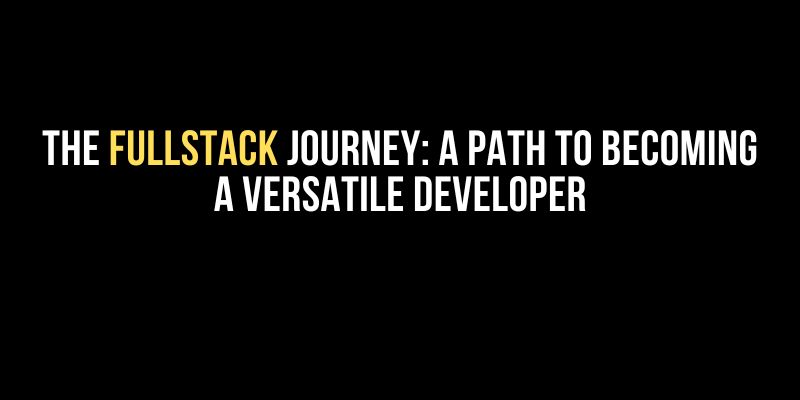Introduction:
Becoming a versatile developer is an exciting endeavour that opens doors to endless opportunities in the tech industry. In today’s rapidly evolving digital landscape, companies seek professionals who can handle both frontend and backend development, making fullstack developers highly sought after.
If you’re interested in pursuing a career as a full stack developer, this comprehensive guide will provide you with a roadmap for your journey. FITA Academy can provide you with the skills and knowledge needed to excel in the field. So why wait? Sign up for FITA Academy’s Full Stack Developer Course in Chennai today and take the first step towards your dream career!
A Path to Becoming a Versatile Developer
Embarking on the full-stack journey requires dedication, perseverance, and a passion for continuous learning. By following the steps outlined in this guide, you can develop the skills and knowledge necessary to thrive in the field of fullstack development.
The Basics of Fullstack Development:
Before diving into the specifics, let’s first understand what fullstack development entails and the foundational knowledge you need to build a strong career.
What is Fullstack Development?
Fullstack development refers to working on both the front and backend of a web application. It involves handling the user interface, user experience, and the underlying server-side logic. A full stack developer can seamlessly transition between frontend and backend tasks, making them versatile and valuable assets to any development team. The Full Stack Developer Online Course provides comprehensive training in various technologies required for building web applications.
Essential Skills for Fullstack Developers
To become a versatile full-stack developer, you need to acquire a diverse set of skills. Here are some essential skills that will set you on the right path:
- Proficiency in programming languages such as JavaScript, Python, or Ruby.
- Knowledge of frontend technologies like HTML, CSS, and JavaScript frameworks (e.g., React or Angular).
- Familiarity with backend frameworks and technologies such as Node.js, Django, or Ruby on Rails.
- Experience with databases and querying languages like SQL or NoSQL.
- Understanding of version control systems like Git.
- Ability to work with APIs and integrate third-party services.
Conclusion:
Congratulations on completing the journey to becoming a versatile full stack developer! By mastering programming languages, frontend and backend development, and staying updated with industry trends, you’ve acquired the skills needed to excel in the tech industry.
Embrace continuous learning, network with fellow developers, and never stop challenging yourself. Your commitment and expertise will open doors to exciting career opportunities. Good luck on your fullstack journey!






Recent Comments